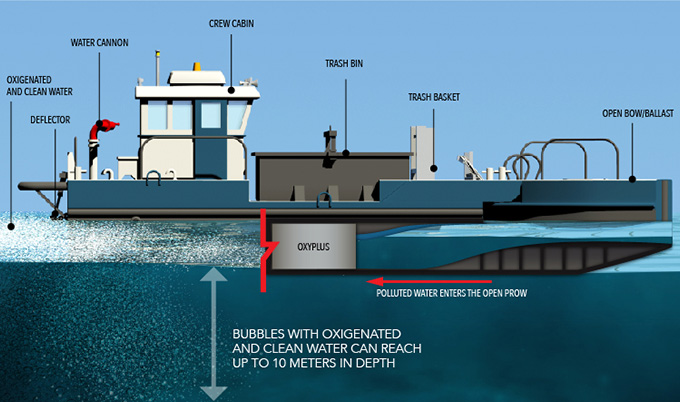Impacts on water quality by in situ induced ozone‑oxygen oxidation in a
polluted urban reservoir
The results of the successful implementation of a treatment based on the injection of ozone (O3) and oxygen (O2) into a contaminated body of water are reported for the first time. Three decontaminating units (SCAVENGER™), which have the capacity to inject up to 120 g O3/h and 250 Kg O2/h in the form of micro-bubbles (90 ± 10 μm in diameter), were placed in the contaminated Valsequillo reservoir, Central Mexico. In order to evaluate the efficacy of the treatment, 20 physicochemical parameters, 18 organic compounds, 66 inorganic compounds and 11 biological indicators were measured before, during and after the treatment; all of them in several representative sites of the east side of the Valsequillo reservoir. After 5 months of operating the SCAVENGER™ units in the eastern part of the reservoir, the concentration of Dissolved Oxygen (DO) increased 68%. Likewise, the chemical reducing conditions of the reservoir reflected by the low oxidation-reduction potential (ORP; −237 ± 75 mV) became quasi-oxidant (10±58mV). The treatment was efficient in water disinfection, presenting an 80% reduction in Fecal Coliforms (FC).
Some heavy metals also showed a decrease in their concentration, being as follows:
Al (65%), Cr (35%), Pb (46%), Zn (60%),Mn(20%), Mo (40%), Fe (32%), As (58%) and Co (26%).

